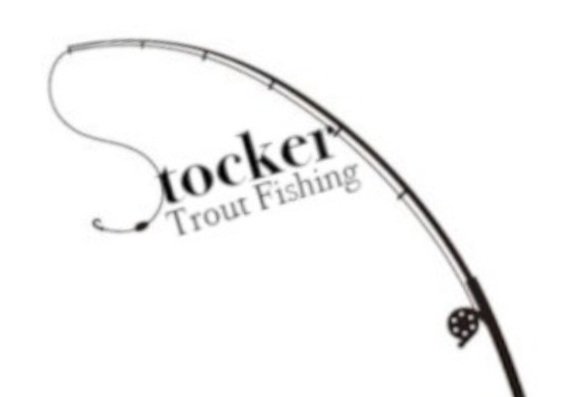What are Common Fly Sizes? Your All In One Fly Size Guide
Introduction
Fly fishing is a popular angling method that requires a unique understanding of fly sizes to effectively target various fish species. Flies come in a wide range of sizes, each designed to imitate different types of aquatic insects, baitfish, and other prey. In this article, we will discuss common fly sizes and their applications in fly fishing.
General Fly Size Guidelines for Fly Fishing
| Fish Species | Fly Size Range |
|---|---|
| Trout | #10 - #22 |
| Bass | #2 - #10 |
| Bluegill / Panfish | #10 - #14 |
| Carp | #6 - #10 |
| Salmon / Steelhead | #2 - #8 |
| Striped Bass | #1/0 - #4/0 |
| Tarpon | #1/0 - #4/0 |
| Bonefish | #4 - #8 |
Fly Size Classification
Fly sizes are classified using a numerical system that ranges from the smallest (#32) to the largest (#1), with larger numbers representing smaller flies. Additionally, there are fly sizes classified as 'aught' sizes, indicated by a slash followed by a zero (e.g., #1/0, #2/0, etc.), which are even larger than the #1 size. These larger flies are typically used for bigger fish species and saltwater fishing.
Small Flies
Small flies, generally ranging in size from #16 to #32, are used to imitate tiny aquatic insects such as midges, small mayflies, and microcaddis. These flies are particularly effective when targeting trout and other species that feed on small insects. Fly fishing with small flies can be challenging due to their diminutive size and reduced visibility in the water, but they can also yield excellent results when fish are selective and focused on small insects such as midge.
Medium Flies
Medium-sized flies, typically ranging from #10 to #16, are versatile and can imitate a variety of insects and small baitfish. Common patterns in this size range include nymphs, dry flies, and streamers. Medium flies are often used to target a wide variety of species, such as trout, bass, and panfish, offering a good balance between visibility and natural appearance.
Large Flies
Large flies, usually ranging from #1 to #10, are designed to imitate larger prey items like baitfish, crayfish, and large aquatic insects. These flies are commonly used to target bigger fish species, such as bass, pike, and muskie. Streamers, large nymphs, and poppers are some popular fly patterns in this size range, offering a more enticing and substantial meal for predatory fish.
Aught Size Flies
Aught size flies, such as #1/0, #2/0, and larger, are primarily used for saltwater fly fishing or targeting large freshwater species like salmon, steelhead, and northern pike. These flies are designed to imitate large baitfish, shrimp, and squid, among other prey items. Tarpon, bonefish, permit, and striped bass are just a few examples of saltwater species commonly targeted with aught size flies.
Trout Fly Sizes
Trout are one of the most popular species targeted by fly anglers, and they can be caught using a wide range of fly sizes. Generally, fly sizes #10 to #22 are effective for trout, depending on the specific food sources available in their environment. Smaller flies are used to imitate midges and small mayflies, while larger sizes can represent stoneflies, caddisflies, and small baitfish.
Bass Fly Sizes
Fly fishing for bass requires flies that imitate the larger prey items bass typically consume. Fly sizes in the #2 to #10 range are common for bass fishing, with patterns such as streamers, large nymphs, and poppers being popular choices. These larger flies effectively mimic baitfish, crayfish, and frogs, which are all common food sources for bass.
If you are interested in learning more about fly fishing for Bass, I have written a full article about the subject! Be sure to check it out!
Panfish and Bluegill Fly Sizes
Panfish, such as bluegill and crappie, are often targeted using smaller fly sizes ranging from #10 to #14. These smaller flies effectively imitate the insects and small aquatic organisms that panfish typically feed on. Popular patterns for panfish include small nymphs, wet flies, and dry flies, with the aim of mimicking aquatic insects like mayflies, caddisflies, and damselflies.
If you are interested in learning more about fly fishing for bluegill, I have written a full article about the subject! Be sure to check it out!
Saltwater Fly Sizes
Saltwater fly fishing presents unique challenges and often requires larger fly sizes to target the wide variety of species found in marine environments. Aught size flies, such as #1/0, #2/0, and even larger, are commonly used for saltwater species like tarpon, bonefish, permit, and redfish. These large flies imitate prey items such as shrimp, crabs, and baitfish, which are staple food sources for many saltwater species.
Seasonal Variations
Fly sizes may vary depending on the season and the specific prey items available to fish during different times of the year. For example, during spring and early summer, aquatic insects like mayflies and caddisflies hatch in large numbers, making smaller fly sizes more effective. Conversely, in the fall, when larger baitfish and terrestrial insects are more abundant, larger fly sizes may be more suitable.
Conclusion
Understanding common fly sizes and their applications is essential for successful fly fishing. Different fly sizes are designed to imitate various prey items, and selecting the appropriate size can greatly impact your chances of catching your target species. By familiarizing yourself with the size range suitable for your target species and considering factors such as seasonality and prey availability, you can greatly improve your fly fishing experience and success rate.


